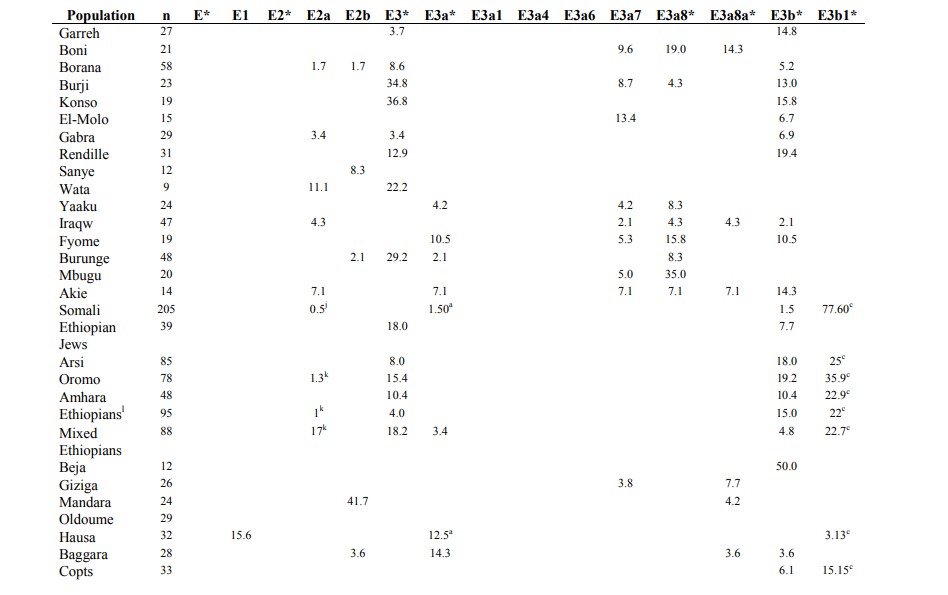They're different lineages not all that close to each other. E-M81 is a paragroup of E-L19 and only 4800 years old, nearly half the age of the 9200 year old subclade this brother is under. It would be like comparing our E-V12 to E-V13 because they're both from E-M78. As Alchemist said its more likely this brother's ancestors were western Green Sahara residents that drifted over to join our ancestors in Sudan during the Neolithic.Your theory is plausible but my theory is more reasonable. They carry different versions of E-M81 because they were brought to the Horn by different migrants from across the Mediterranean world. We have seen countless of E-M81 lineages from the same general region (Harar). If it came with the proto Cushitic tribes then surely we would have seen at least some traces of this same subclade in Sudan, Eritrea, Ethiopia, Kenya etc
If you look carefully at the entire list you will notice geographically the Somali flag is the odd one on the list. This indicates recent arrival.
E-PF2438 YTree
www.yfull.com
There's been studies in the past were Somalis and non-Somali Cushites got undifferentiated E-M35 lineages. The old diversity in all cushites hasn't been entirely lost to bottlenecks like in Somalis.
Nomenclature is different now but E3b=E-M35 and E3b1=E-M78. Cataloguing changed to SNP based because more and more subclades were being discovered in between major subclades.

Last edited:

